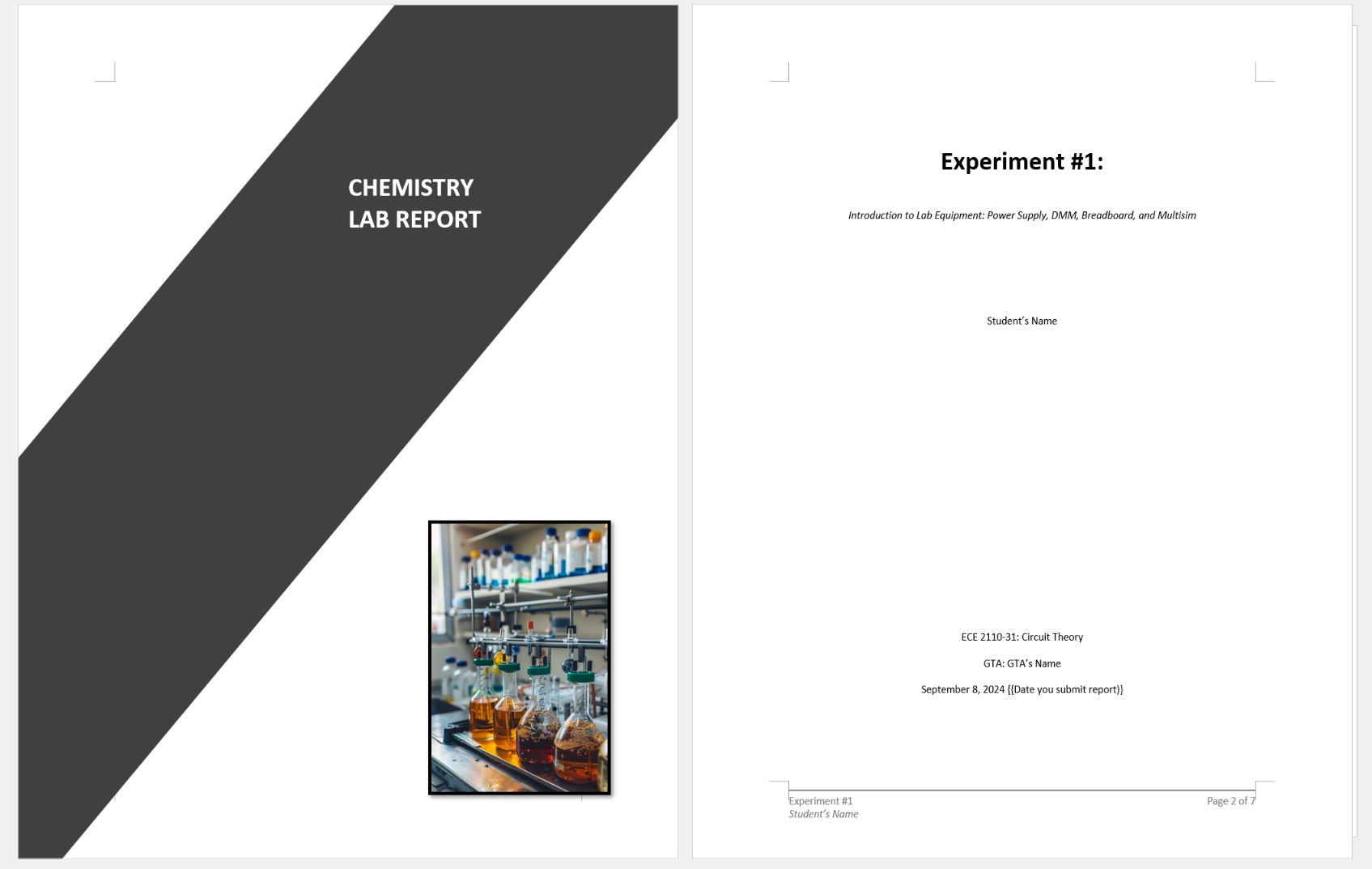Formal Chemistry Lab Report
Sponsored Link免费模板 保存,填空,打印,三步搞定!

Download Formal Chemistry Lab Report
微软的词 (.docx)免费文件转换
- 本文档已通过专业认证
- 100%可定制
- 这是一个数字下载 (3151.36 kB)
- 语: English
Sponsored Link
How to write a formal Chemistry Lab Report? How do you format a lab report for chemistry?
Chemistry lab reports are a fundamental part of any scientific education, providing a structured way to document and communicate the results of experiments. A well-prepared lab report not only helps in understanding the practical aspects of chemical principles but also hones the skills necessary for scientific inquiry and analysis. This template is designed to guide you through the process of writing a comprehensive chemistry lab report, ensuring that all essential components are included and presented clearly.
Purpose of a Chemistry Lab Report:
The primary purpose of a chemistry lab report is to document the process and results of an experiment. It serves to:
- Communicate Findings: Clearly convey the objectives, methods, results, and conclusions of your experiment.
- Provide a Record: Offer a detailed record that can be referred back to, ensuring reproducibility and validation of the results.
- Enhance Understanding: Help in deepening your understanding of the scientific concepts and techniques applied during the experiment.
- Develop Skills: Improve your ability to analyze data, think critically, and present scientific information effectively.
Components of a Chemistry Lab Report:
A typical chemistry lab report includes several key sections, each serving a distinct purpose:
- Title Page: Includes the title of the experiment, your name, the date, and the name of your instructor or lab partner.
- Abstract: A brief summary of the purpose, methods, results, and conclusions of the experiment.
- Introduction: Provides background information, the purpose of the experiment, and the hypothesis.
- Materials and Methods: Details the materials used and the step-by-step procedures followed during the experiment.
- Results: Presents the data collected during the experiment, often using tables, graphs, and figures.
- Discussion: Analyzes the results, discusses their implications, and compares them with theoretical values or literature.
- Conclusion: Summarizes the main findings and their significance.
- References: Lists all the sources and references used in preparing the report.
- Appendices: Includes any additional information, such as raw data or detailed calculations.
Tips for Writing a Successful Lab Report:
- Be Clear and Concise: Ensure that your writing is clear, concise, and free of unnecessary jargon.
- Follow a Logical Flow: Present your information in a logical order, making it easy for the reader to follow your thought process.
- Use Proper Formatting: Adhere to any specific formatting guidelines provided by your instructor or institution.
- Proofread: Carefully proofread your report to correct any grammatical or typographical errors.
Download this Formal Chemistry Lab Report template here!
DISCLAIMER
Nothing on this site shall be considered legal advice and no attorney-client relationship is established.
发表评论。 如果您有任何问题或意见,请随时在下面发布
相关文件
Sponsored Link

